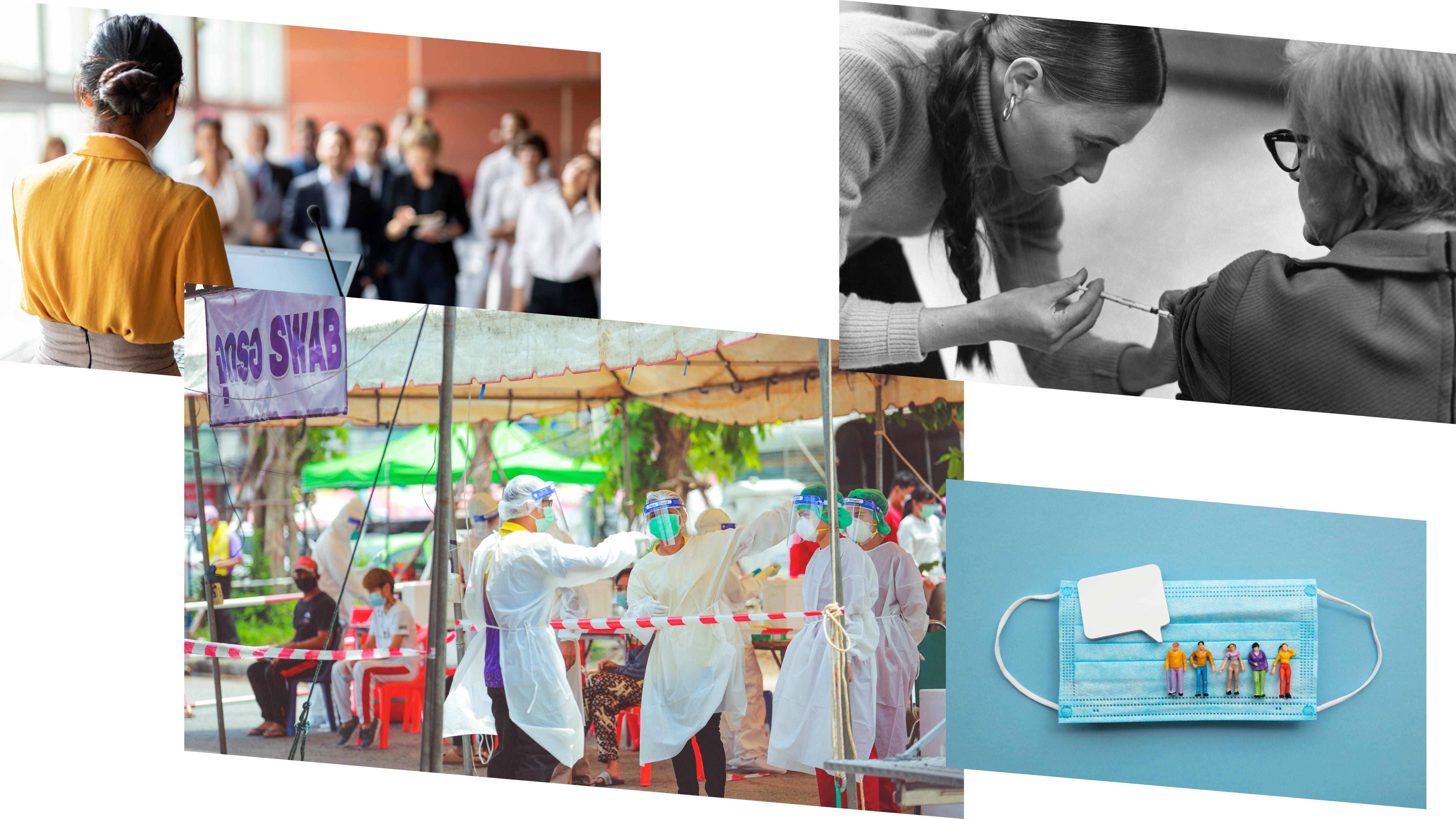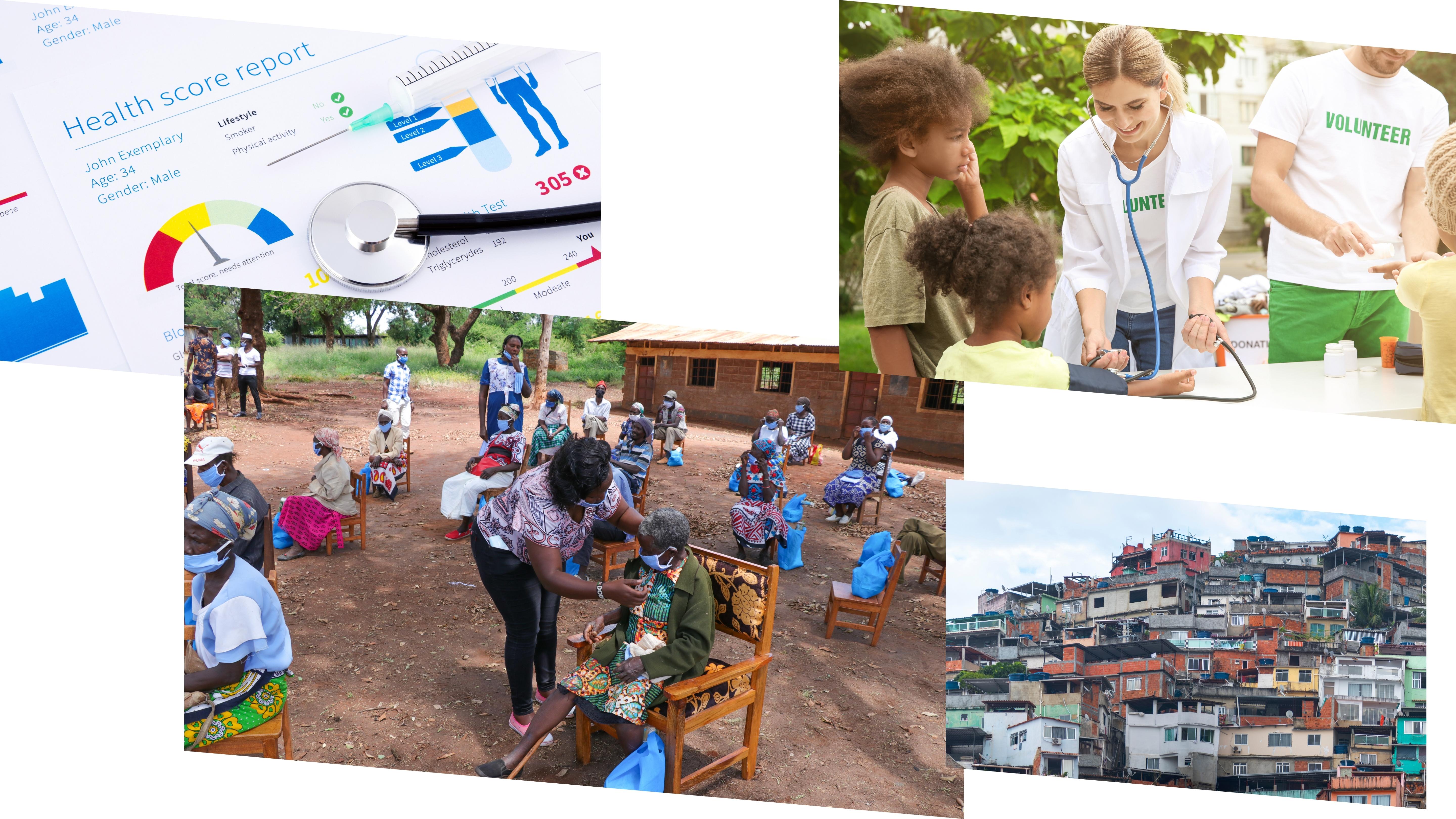-
GeneralGeneral
-
Community Oriented Primary Care Homepage


This Community-Oriented Primary Care introductory course (COPC) provides a model for integrating primary care services into communities and targets health-related concerns with active community participation. COPC is the marriage of public health and primary care. The concepts you’ll learn dovetail nicely with the practice of medicine no matter which specialty you choose, as well as the principles of social accountability.
This Community-Oriented Primary Care course is co-sponsored by the American Association of Public Health Physicians, the American College of Preventive Medicine, Global Health through Education, Training and Service (GHETS), the University of Gezira. The course uses instructional goals adapted from UIW course outcomes and George Washington University COPC MPH concentration. The course uses resources from accredited, world-class organizations such as the American Journal of Public Health, the DC Area Health Education Center, the University of Kansas Community Tool Box, and the World Health Organization.
The course was redesigned in 2022 by Aduke Williams, B.Sc.; Alixandria Ali, B.Sc.; Felix Emeka Anyiam, MPH, MScPH, DataSc.; Hugo Rojas, MD, MSc, DiplEd.; Maryam Musa, M.B.B.S; Pablo Baldiviezo, MD, MSc, DiplEd.; Reisha Narine, M.Sc., B.Sc.; and Sherian Bachan, M.Sc., B.Sc. It was later revised by Robyn Phillips-Madson, DO, MPH, FACOFP. This course was initially inspired by the vision of David Egilman, MD, MPH and the original course developer were Tess Bird, M.Sc. and Nicolas Druar. Our Advisory Group included: David Egilman, MD, MPH; Jack Geiger, MD, MSciHyg; Jaime Gofin, MD, MPH; Jane Frances Namatovu, BDS, MMED, FAMMED/COMM PRACT; Pyser Edelsack, MSW; and Ravinder Mehta, MD.
For publications on NextGenU.org’s courses’ efficacy, see the NextGenU.org’s publication page. Subscribe to our newsletter to be notified of future updates, new courses, and to be part of our community.
There are four (4) modules to complete, which include:
- Module 1: Introduction to COPC
- Module 2: COPC and Health Systems
- Module 3: Preparing for a Community-based Intervention
- Module 4: Implementing the COPC approach and promoting community participation
Time estimation and credit hours of course:
The completion time for this course is estimated at 51 hours at an average rate of 144 words/minute, comprising 7 hours of learning resources, 14 hours of time to study content and assimilation, and 31 hours of participating in learning activities and quizzes, to assist the learners in the synthesis of learning materials. This course is equivalent to 1 credit hour.
Requirements for completion of course:
The course requires completion of all activities (reflection, discussion forum, case scenarios etc.) to complete the course. At the end of each module, there is a practice quiz with multiple-choice questions. After you’ve completed each module, quiz, and learning activity, at the end of the course, you will have access to a final exam with multiple-choice questions, and a chance to evaluate this course. Participants have up to three opportunities to take the final exam and achieve the required score of >=80%.
Once you have passed that last test, you will be able to download a certificate of completion from NextGenU.org and our course’s co-sponsoring organizations (listed above). We keep all of your personal information confidential, never sell any of your information, and only use anonymized data for research purposes, and we are also happy to report your testing information and share your work with anyone (your school, employer, etc.) at your request. We hope that you will find this a rewarding learning experience, and we count on your feedback to help us improve this training for future students.
At NextGenU.org, we provide the estimated reading times for all of our Learning Resources (LRs) i.e., webpages, articles, and slides. The estimated reading time is calculated using a reading speed of 144 words per minute (no. of words recommended to read in the LR ÷ 144 words per minute). Additionally, we calculate the study/assimilation which for primary sources, are multiplied by 2 and for secondary sources, are multiplied by 1 (estimated read time x 2 = study/assimilation time).
Engaging with this Course:
You may browse this course for free to learn for your personal enrichment; there are no requirements. This free course is primarily intended for public health students, public health professionals, or people working in healthcare settings and wish to learn about community-oriented primary care.
To obtain a certificate, a learner must first register for the course and then successfully complete:
- Complete all the reading requirements.
- Complete all quizzes and pass with a 80% with unlimited attempts.
- Complete all activities and associated certification quizzes.
- Successfully complete the final exam with a minimum of 80% and a maximum of 3 attempts.
- Complete the self and course evaluation forms.
To obtain credit:
- Complete all requirements listed above for the certificate.
- Your learning institution or workplace should approve the partner-university-sponsored NextGenU.org course for educational credit, as they would for their learner taking a course anywhere.
NextGenU.org is happy to provide your institution with:- A link to and description of the course training, so they can see all its components, including the co-sponsoring universities and other professional organization cosponsors;
- Your grade on the final exam;
- Your work products (e.g. peer and mentored activities), and any other required or optional shared materials that you produce and authorize to share with them;
- Your evaluations - course, self, peer, and mentor assessments;
- A copy of your certificate of completion, with the co-sponsoring universities and other organizations listed.
To obtain a degree, NextGenU.org co-sponsors degree programs with institutional partners. To obtain a full degree co-sponsored with NextGenU.org, registrants must be enrolled in a degree program as a student of a NextGenU.org institutional partner. If you think that your institution might be interested in offering a degree with NextGenU.org, contact us.
We hope that you will find this a rewarding learning experience, and we count on your assessment and feedback to help us improve this training for future students.
Next Steps
- Complete the registration form.
- Begin the course with Module 1: Introduction to COPC Principles and Practice. In each lesson, read the description, complete all required readings and any required activity, and take the corresponding quizzes.
*The previous version of this course is also available here for your reference but is not available for registration. Only students that were registered before can complete it.
-
Module 1: Introduction to COPC
 Instructional Goals covered in this module:
Instructional Goals covered in this module:- Describe, analyze and integrate the conceptual framework, methodology, and principles of COPC. Interpret the principles, practices, and conceptual framework for the COPC Model.
-
Module 1: Lesson 1: COPC: Principles and Practices
Upon completion of this lesson, you will be able to:Student Learning Outcomes:
- Describe the Five Principles of COPC.
- Outline the frames and processes implemented in the COPC approach.
- Discuss the historical context of the COPC Approach.
- Describe the concept of 'Community. '
- Explain the value and function of community participation within the COPC process.
- Outline the critical tasks required at each stage of the six steps methodology of COPC.
9 URLs, 1 Forum -
Module 2: COPC and Health Systems
 Instructional Goals covered in this module:
Instructional Goals covered in this module:- Evaluate the benefits of COPC and discuss forces that may impact COPC model utilization in a larger health system and globalized world.
-
Module 2: Lesson 1: COPC and Larger Health Systems
Upon completion of this lesson, you will be able to:Student Learning Outcomes:
- Explain the concept of "Larger Health Systems."
- Describe the characteristics that constitute "Larger Health Systems."
-
Summarize the benefits of COPC interventions in the Larger Health System.
4 URLs - Explain the concept of "Larger Health Systems."
-
Module 2: Lesson 2: COPC Utilization in a Globalized World
Upon completion of this lesson, you will be able to:Student Learning Outcomes:
- Describe the most significant implications of globalization on health care systems.
- Explain issues related to COPC in the context of the globalized world.
- Explain how conceptual factors influence COPC utilization in Larger and Globalized Health Care systems.
- Explain how practical factors influence COPC utilization in Larger and Globalized Health Care systems.
- Illustrate how community oriented health services impact the health system and globalized world.
4 URLs, 1 Forum - Describe the most significant implications of globalization on health care systems.
-
Module 3: Preparing for a Community-based Intervention
 Instructional Goals covered in this module:
Instructional Goals covered in this module:- Prioritize and plan a community-based intervention.
-
Module 3: Lesson 1: Defining and Characterizing the Community: Identifying Needs and Resources
Upon completion of this lesson, you will be able to:Student Learning Outcomes:
- Discuss qualitative and quantitative methods that can be used in community health needs assessment.
- Explain advantages and disadvantages of qualitative and quantitative data sets in conducting community health needs assessment.
- Examine community needs, assets, and resources in planning COPC interventions.
- Describe how social, economic, and environmental determinants of health impact the planning of COPC Intervention.
- Determine the characteristics of Communities by utilizing a variety of techniques and resources.
5 URLs, 1 Forum - Discuss qualitative and quantitative methods that can be used in community health needs assessment.
-
Module 3: Lesson 2: Planning and Preparing for COPC Intervention
Upon completion of this lesson, you will be able to:Student Learning Outcomes:
- Explain the COPC process in action (utilizing an example).
- Describe the process of prioritizing health conditions in planning COPC interventions.
- Explain the basic components of an intervention proposal.
- Develop a brief proposal for the development of a COPC intervention.
3 URLs, 1 Forum -
Module 3: Lesson 3: Implementing the COPC Approach
Upon completion of this lesson, you will be able to:Student Learning Outcomes:
- Summarize guidelines and recommendations for implementing community-oriented primary care interventions.
- Identify the key stakeholders required for the implementation of COPC interventions.
-
Describe the role of each stakeholder in the implementation of COPC interventions.
- Explain the importance of the evaluation and reassessment process in the COPC Process.
- Outline methods of conducting evaluations and reassessment of community priorities.
6 URLs, 1 Forum -
Module 4: Implementing the COPC Approach and Promoting Community Participation Implementing the COPC
 Instructional Goals covered in this module:
Instructional Goals covered in this module:- Apply appropriate methods to promote community participation in the development of COPC.
- Respect others in both spoken and written correspondence by responding to post or synchronous sessions in a professional manner.
- Communicate the principles and features of the practice of COPC to lay populations, to health professionals, and to other related audiences.
- Apply appropriate methods to promote community participation in the development of COPC.
-
Module 4: Lesson 1: Explore the Skills Involved in Promoting Community Participation
Upon completion of this lesson, you will be able to:Student Learning Outcomes:
- Describe the importance of community involvement in COPC practice.
- Identify methods and strategies for promoting community participation.
-
Differentiate among the Locality development model, Social Planning model, and Social action model of community organization.
- Explain specific strategies that can be used to promote community participation in problem solving through COPC interventions.
- Describe how to employ strategies to motivate community members to participate in COPC interventions.
6 URLs, 1 Forum -
Module 4: Lesson 2: COPC and Communication Strategies
Upon completion of this lesson, you will be able to:Student Learning Outcomes:
- Explain the fundamental ethical considerations that should guide communication in COPC interventions.
- Describe the appropriate channels of communication (spoken and written) to be used for various audiences in COPC interventions.
-
Examine the most appropriate communication strategies (methods and channels) to communicate about COPC interventions to different audiences eg. lay populations and health professionals.
- Develop a brief communication plan to inform health professionals, lay populations, and other related audiences about the importance of the implementation of COPC interventions.
7 URLs, 1 Forum -
Course and Self Evaluation & Certificate
 In this section, you can provide feedback about this course to help us make NextGenU.org better. Once evaluations are completed, you will be able to download your certificate of completion.
In this section, you can provide feedback about this course to help us make NextGenU.org better. Once evaluations are completed, you will be able to download your certificate of completion.

